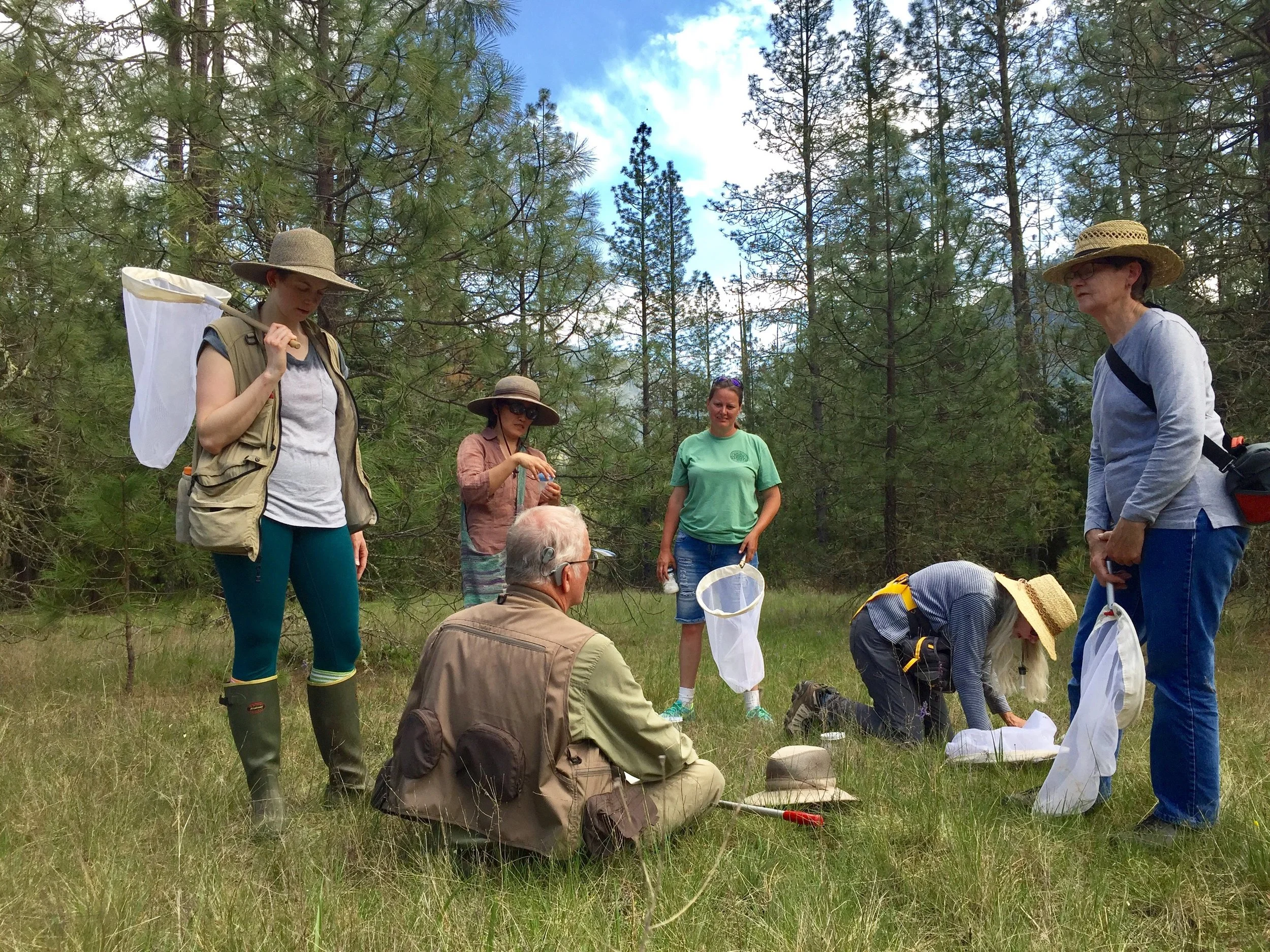1. THIS WEEK IN PICTURES
The Grant's Pass team out sampling last week with Bee Atlas Superman Rich Little. Rich was also down in Newport this week and will be traveling to Klamath Falls in a few weeks. Rich has generously agreed to help you get started on the ground, so please invite him to join you if you are having trouble getting started.
Ed Sullivan spots Bombus melanopygus on Fringe Cup (Tellima grandiflora). Portland, Oregon. May 3, 2018
Jerry Paul from the Benton team says he needs more pins! Great job Jerry!
Sheila Richmond, saw a velvet ant (not a bee, but a distant relative and very cool) in the Tom McCall Preserve on trail by the 1st pond in Rowena, OR (May 4, 2018). Thanks Catherine Flick!
Benton County Collection team sampling on common camas.
2. THIS WEEK ON INATURALIST
We have 25 people on the iNaturalist (Regional Teams) project this week. We doubled our catch from last week - 419 bees. Some of the most popular plants people were catching bees on were camas, wax currant, mustard and ceanothis.
But we also know that a small subset of people using the app, so many of you are using paper. The next topic will give you a workflow to get records to us.
3. INATURALIST FREAKS ME OUT - GIVE ME AN ALTERNATIVE!!!
We discussed various options for getting data from those of you working entirely from paper. What seemed simplest was to have you photograph or scan a copy of your sampling notebook and to email a copy to Andony (andony.melathopoulos@oregonstate.edu). Use the subject line: 'Atlas Notebook'. Andony will pass this on to his student Addison, who will enter the data in a consistent way. Addison will then print up your tags and mail them out to you. If this still poses problems, let us know and we will come up with another way. Please send these sheets to us regularly (e.g., every 2-4 weeks) so we can keep track of how things are going out there.
Here is a copy of Michael O'Loughlin's field notebook. For those of you not working on iNaturalist, email a scan or picture of your notebook to Andony and he will use this to produce your labels.
4. NEST BLOCKS - A HOW TO GUIDE
There is a huge shipment of nest blocks going out the door on Monday. Thank you to Addison and Umayyah for assembling these over the past few weeks (their hands are considerably stronger from all the stapling). We now have an instruction sheet, which we have put on the manuals and videos page. This sheet should give you all the information you need to get these blocks up in the best places. Please try and get these blocks up as soon as possible.
5. SURVEY DATES (THIS WEEK)
We would love to include the dates on your group. Please email these to Andony by Saturday each week (Andony.Melathopoulos@oregonstate.edu) and he will include it in the weekly blog.
Klamath Falls Bee Collection Team
- Friday May 11
- Bee pinning and id session - contact Nichole if you need more information; nicole.sanchez@oregonstate.edu
Lincoln County Bee Collection Team
- Thursday May 3 (10am)
- South Jetty State Park parking lot (directions: From hwy 20/101 intersection, turn left (south); after crossing the big bay bridge, take 1st right; just before winding around back under the bridge and take road to left. Jetty road; go to the very end of road and park by radio tower).
Linn-Benton Bee Collection Team
- Friday May 11 (2-4pm)
- Sunset Park, 4567 SW Country Club Drive, Corvallis, OR 97333, (map)
Yamhill Bee Collection Team
- Tuesday May 8
- Jeanie Taylor's Property - contact Michael for directions; molfamily@earthlink.net.
When sending in your submission, please send along an address and/or map link, the time of the event and a contact.
5. QUESTIONS FROM YOU
Q: If there is a plant (say 40 sq.ft. of Ceanothus) being worked by 15 of of what appear to be the same bee, how many should we collect?
A: This question has come up before. Sometimes you get a hatch of males and there can be a lot of individuals of the same species. But you won't have the experience yet to tell. so I would not hold back and collect a bunch. What is a bunch? Clearly, you are going to miss and will be limited by your skill at this point, so I would say, as many as you can. But you also want to not spend all your collecting on one plant if you want a diverse sample, so I would spend around 5 min and then move on to something else. With the Benton crew on the weekend, we saw a lot of bees on Ceanothus, but we only saw the cool Osmia when we wandered over to the camas.
Q: I continue to get push back on killing bees to study them. The link in the materials below that was provided us no longer works. Can you update the link and/or give us some talking points on this subject?
A: This question came in from two teams this week. First, we added two resources to the Training Manuals and Video page: 1) a handout provided by Jerry Paul, and 2) a small comic that explains the importance of bee specimens. I would also encourage the more nerdy among you to look at this study which compared bee community structure in two sets of sites, one set that was heavily sampled every two weeks for three consecutive years (i.e., much, much higher than what you are doing) and one that was left unsampled. The research concluded that the sampling had no effect on bee communities. But, obviously, people who are concerned about you sampling need some crisp facts to help them understand why what you are doing is essential. We would encourage you to use the following points:
- "I am part of a network of volunteers from around the state who are doing the first survey of native bees in Oregon in its history. There are likely over 800 species of bees in the Pacific Northwest and we have a very poor understanding of who they are and where they live. By sampling we provide a baseline for decision makers, land managers and the public to understand the status of our bees" [we are sending around out postcards - hand these to people].
- "People say, this is a good bee plant. But we have over 800 species of bees in the PNW and they don't equally prefer the same plants. When I survey I keep track of what plants the bees come from. By identifying the specimens, we can get a clearer picture of the kinds of plant communities needed to help a broad number of bees".
- "The head of the Oregon State Arthropod Collections (Dr. Chris Marshall) points out that a specimen is worth a thousand pictures. I have been trained in basic insect curation techniques and my specimens will be drawn into a large database and stored in a collection so that researchers around the world can use it to understand patterns of biodiversity and how best to protect our endowment of bees. A well curated specimen can last hundreds of years and can provide us with a snapshot in time of our bee communities".
- "We cannot identify many of our bees. Many are what are known as 'cryptic species'. A specimen allows us to extract DNA so we can get a basic picture of who are bees are".
Q: People in my group tend to go for larger bees. I think we are missing smaller bees. Is there a problem with bias?
A: Certainly. Start big, but push yourself to catch smaller and smaller bees. But even a good collector will bias towards bigger bees. Pan traps do a terrific job pulling a lot of tiny bees in (and maybe as your group gets more experience you can experiment with pan traps).







